In theory, going on a road trip should be fun and exciting—until you get to all the planning and prepping. On top of all of the usual travel prep you’ll need to do, such as packing your necessities, putting an itinerary together, buying snacks for the road, and various other tasks, you’ll also need to make sure your vehicle is up for the challenge.
What do you need to do to make sure your car is ready to hit the road? Do you need a roadside emergency kit? What should it include?
Planning a long trip is stressful enough without having to worry about vehicular maintenance—but we’re here to help. To take the guesswork out of getting your car roadworthy, we’ve compiled this comprehensive car maintenance checklist for your upcoming road trip.

What to Check on Your Car Before a Road Trip
The most important thing about planning your road trip is ensuring your car’s readiness for the long-haul drive. Here is a list of everything you need to check before you go on a road trip:
Take Care of Unresolved Car Issues
If there are existing issues with your vehicle, address them as soon as possible and well before your scheduled trip. Remember to follow the recommended service intervals for all maintenance parts.
Granted, there will likely be hidden problems on higher mileage vehicles (such as the alternator or the starter, which only has so many starts in it). Also, some things may test out just fine before the trip, yet still fail a few hundred miles from home. So, be aware that there isn’t a 100 percent guarantee you won’t have car trouble, even with a new vehicle.
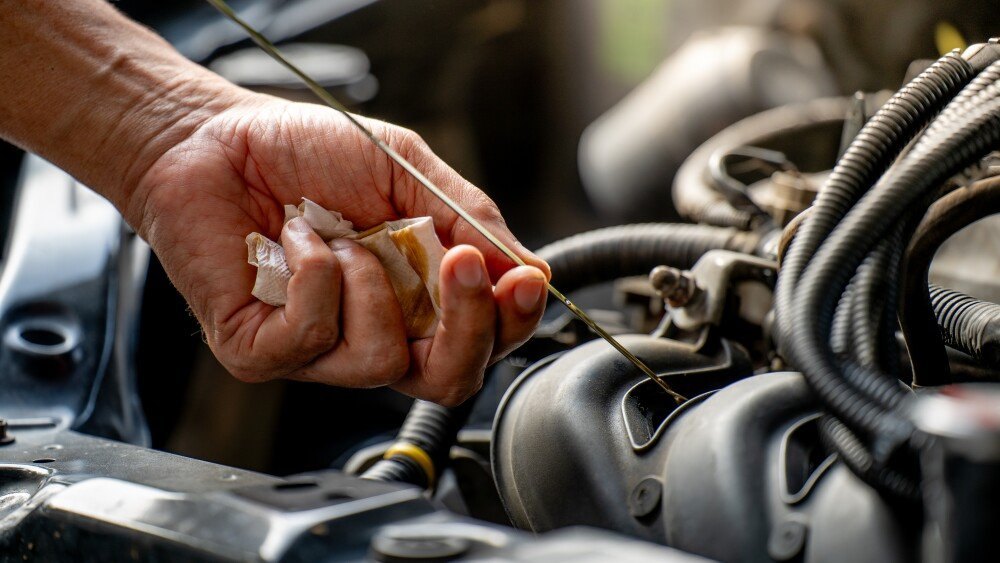
Oil, Fluids, and Filters
It’s crucial to stay on top of the maintenance of your oil, fluids, and filters because these help keep your engine’s critical components in good condition. Change your oil and your oil filter according to the recommended service intervals.
The parts store will know which oil and filter you need based on your make, model, and engine package. Your role is to make sure they fill the right product. Look carefully for leaks and deal with them as you find them. Don’t hit the road with any kind of fluid leak.
There are other fluids and filters you’ll also need to monitor, such as your coolant, transmission fluid, brake fluid, power steering fluid (if applicable), windshield washer fluid, air filter, and cabin air filter. Fill them up or replace them as needed.
If you’re traveling during the winter season, make sure you have winter-grade windshield washer fluid to remove the frost after you’ve been parked overnight.
Battery and Electrical Components
How old is your car battery? A car battery is like an electrical gas tank. If you buy a new battery with 800 CCA (cold cranking amps), for instance, and you use the car for a year, the CCA will drop to about 650. The next year, it will be down to 500 CCA and the year after that, about 400 CCA, and so on. The older it gets, the fewer CCAs it will have.
Eventually, it’ll get to a point where it doesn’t have the energy to start the engine. You can buy an inexpensive battery tester to tell you what the battery’s CCA is, but you will need to remove the battery terminals and connect the tester directly to the battery to get an accurate reading.
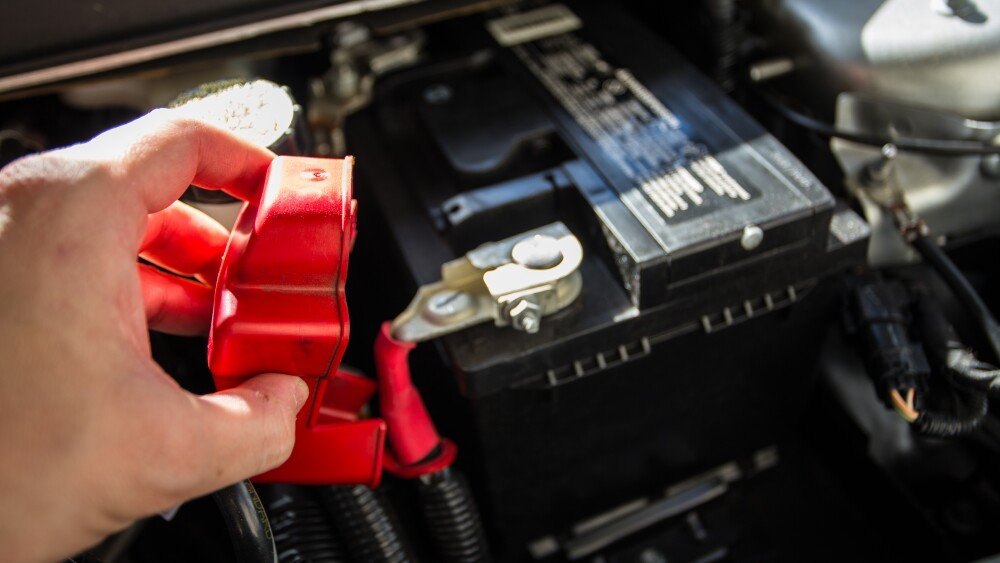
Some batteries tend to corrode their terminals worse than others because of the electrolyte (acid) leaking out of the battery where the post passes through the case. That’s why those little felt washers made for battery posts work so well.
But some mechanics, after cleaning the battery and the terminals, put a smear of dielectric grease all the way around the base of the terminal. To keep your terminals clean after a service, you can get battery terminal cleaner tools and aerosols at parts stores, along with battery terminal protector sprays.
Remember that when you remove your battery terminals to clean them, you’ll also be erasing any trouble codes and any adaptive learning the PCM has written, and the engine might idle too low or not run as smoothly as before after battery replacement or terminal cleaning.
Other electrical components are also susceptible to wear, so make sure to check them as well. Take a close look to see if any of the electrical components show signs of fraying, damage, and loose connections. Check your car’s horn and windshield wipers to make sure they’re working properly.
It’s recommended that you get a new pair of windshield wipers every six months, and that includes the rear wiper on SUVs.
Tires
Long-haul trips will take a toll on your tires, so make sure they’re in top shape before your trip.
Make sure, of course, that the tires aren’t more than six years old. This is because that is when the warranty expires, even if the tires still look new. This photo shows what the tire date code looks like:
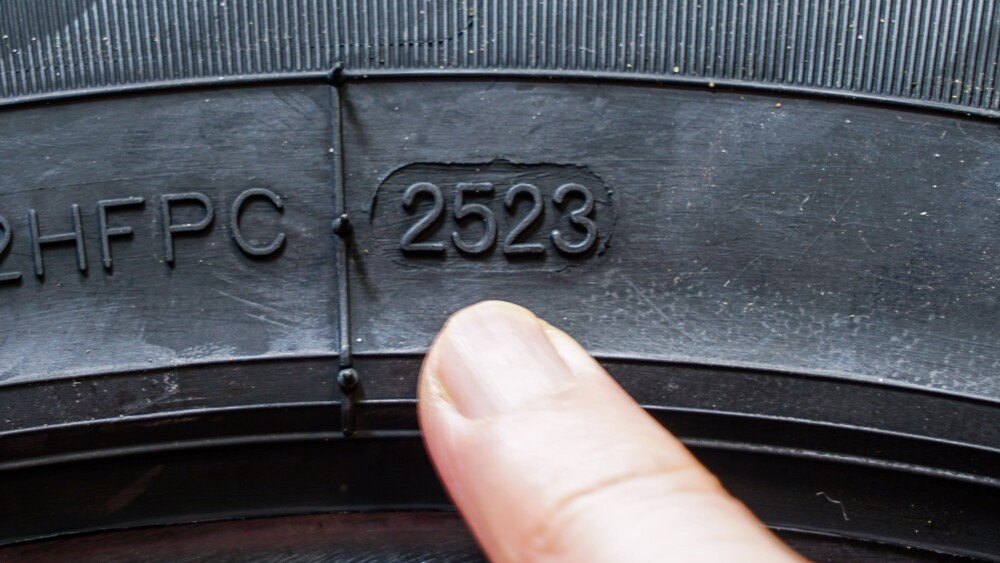
It says “2523,” which means the tire was manufactured on the 25th week of 2023. This date code may be on the inboard side of the tire rather than the outboard side, so get your flashlight and find it on all four tires, as well as the spare. Some manufacturers say that even though the tires aren’t warranted beyond six years, they’re still technically safe for ten years as long as they still have good tread. But if you see dry rot cracks, replace the tires.
Don’t forget to check and make sure the spare isn’t flat and that you know where the jack and lug wrench are located. If possible, buy a four-way lug wrench and carry it with you rather than depend on the lug wrench that came with the vehicle.
An important thing to keep in mind: If you have a space-saver spare, it should never go on a driving axle. If your flat tire is on a driving axle, you’ll need to remove one of the free-rolling tires and move it to the axle, and then put the space-saver spare tire on the non-driving axle.
This is a smart move because some Asian cars can destroy the differential gears in the final drive if you put a smaller tire on one side of the driving axle and drive a long way.
Check tire pressure and tread depth, and add air if needed. You’ll find the correct tire pressure on the tire information decal, which is usually on one of the door jambs. It’ll tell you the proper tire pressure and tire size.

If your tires are showing signs of damage, such as bulges and sidewall cracks, replace them immediately.
Brakes
Your brakes should work perfectly. They should feel right (and definitely not soft or spongy) and must be able to stop the car straight with very little noise. The brake pedal shouldn’t fall away from under your foot when you’re sitting at a traffic light; that’s a master cylinder issue. The disc brake pads and rear brake shoes should also be in good shape before you go on your trip.
Another important thing to check is the antilock braking system (ABS). If your car has it, check that it’s working properly.
Belts and Hoses
It’s a bad idea not to check the belts and hoses. If you see the belt tensioner bouncing when the engine is running, the damper or bushing in the tensioner is worn out. Replace the belt tensioner and the belt, but make sure you have the skill to do the job before you start. It’s a good idea to have solid instructions (check YouTube) for changing the belt on your vehicle.
Check for swollen or cracked coolant hoses and make sure the coolant level is where it should be, but never open a hot cooling system. Always let it cool first.
Lights
All of your car’s interior and exterior lights should be working properly, including the high mount stop lamp. If the latter is not functioning, studies have shown that you’re forty percent more likely to be rear-ended by another driver.

Have a friend or family member help you check your headlights, fog lights, tail lights, brake lights, turn signals, hazard lights, interior lights, etc. If the vehicle has daytime running lights, check those too.
Heating and AC
Imagine the discomfort and potential health risks to you and your passengers if your car didn’t have air conditioning in the summer or no heat in the winter. This is less about breaking down than being comfortable, and you’ll know it if the heater or A/C is on the blink. If the heater isn’t working, it could be due to low coolant.
Engine
Have you topped up your engine coolant and oil as recommended? Is your serpentine belt working properly and not showing any signs of damage? Do you hear unusual noises coming from your engine or are there any pending diagnostic trouble codes (DTCs) left unresolved? Do any of your radiator and heater hoses have bulges, cracks, or blisters? Have you taken care of your transmission and differential fluids as well?
If the vehicle has over 125,000 miles and the radiator tanks are plastic (almost all of them are nowadays), be aware that the radiators can fail without warning and that’s an engine killer. It does happen, so you might want to replace the radiator if you have more than 125,000 miles on your odometer.
If the timing belt hasn’t been changed on schedule, don’t take a trip without having that taken care of—best to decide when to replace the belt rather than letting the belt decide.
Interiors
Clean interiors can make your ride more enjoyable and comfortable, so try to do a deep clean before you go on your trip. Vacuum your floor mats as well as the nooks and crannies of your seats (you’ll likely find a lot of crumbs, hair, and dust in those crevices, depending on how often you clean your car). Wipe down all surfaces—the dashboard, the inside of your windows, and the center console.
Also, make sure your pedals aren’t snagging on the floor mats, as this can cause a potentially dangerous situation.

Finally, if you’re traveling with a baby or toddler, make sure that the car seats are properly installed.
Gas (or Charge)
Hopefully this doesn’t need to be said, but make sure to gas up before your trip. You’ll want to have a full tank on the day of your departure and be aware of where all the gas stations are on your route. If you drive an electric vehicle, the same idea applies.
Consider the Season
Going on a road trip in the winter or summer months may add a few things that you’ll need to keep in mind. For example, if you’re traveling in warm weather, you’ll need to ensure that your tires are inflated to the right pressure and that your cooling system has enough coolant. Also, check your fluid levels, batteries, wiper blades, and lights to ensure that they’re working properly.
On the other hand, if you’re traveling in cold weather or to places with heavy snowfall, consider installing snow tires. The cold can also affect your battery’s power, so make sure to check your batteries, wiring, heating, and other components. You must also make sure that your defrosters and windshield wipers work and that you have high-quality winter windshield wiper fluid with de-icer if you’re going to a place with lots of snow and ice.
What to Pack in Your Car Emergency Kit
It’s always important to have an emergency kit ready. Let’s discuss all the things you should have in your kit if you ever encounter breakdowns or car issues on the road:
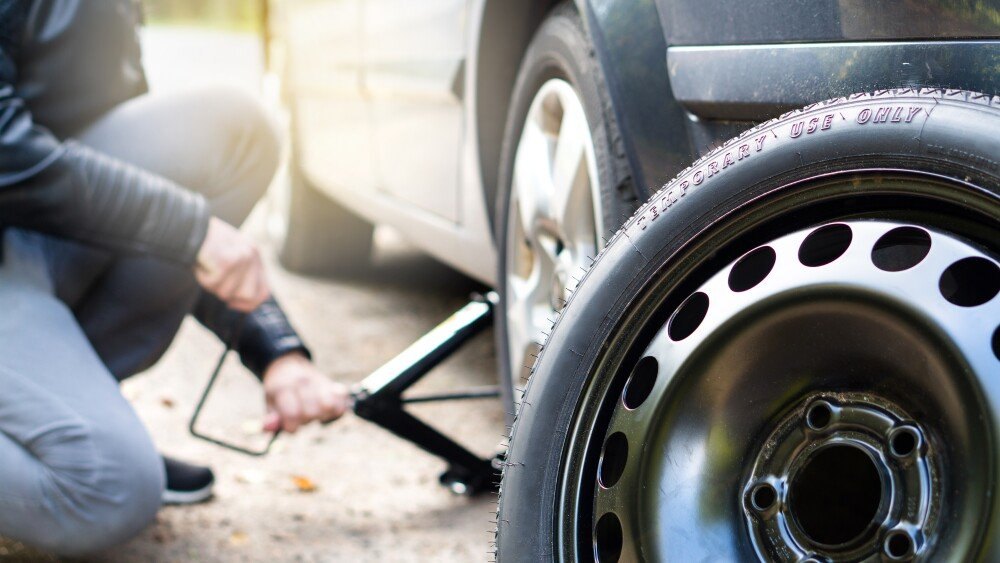
Tire Change Equipment
A properly inflated spare tire, a wheel wrench, and a jack are essential for changing flat tires. A tire pressure gauge is also a good idea for monitoring tire air pressure and ensuring good tire condition.
There are some really nice kits available online that include a 12-volt hydraulic jack and a 12-volt impact wrench with sockets. Never a bad idea to be prepared, but don’t ever try to change a tire in a bad neighborhood or on uneven ground. It’s best to call AAA if you’re not confident that you can handle a tire change—and these days some cars come without spare tires, so there’s that.
Jumper Cables
If your battery dies, you’ll need jumper cables to help jumpstart your car, or one of those little brick-shaped car starters. Get a good one, it’s indispensable, but make sure it’s charged up before you start your trip. It also allows you to restart your car in case of unexpected battery failure, especially in cold weather.
Having a pair of jumper cables handy means you also get to help people who might need it as well.
Tool Kit
You shouldn’t have to MacGyver a solution to your car problems in the middle of nowhere, so bring your own tool kit when you go on a road trip. What should your tool kit contain? Here are some essentials:
- Pliers
- Screwdrivers
- Wrenches
- Torque wrench
- Breaker bar
- Rubber mallet
- Duct tape
- Electrical tape
- Wire cutters
- Multi-tool or Swiss army knife
- Miscellaneous hardware
- Flashlight
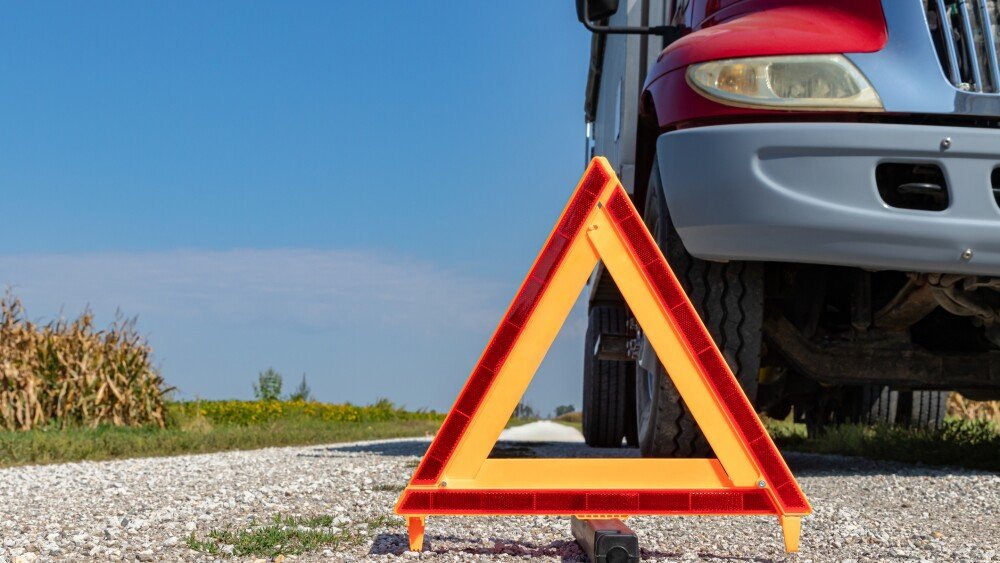
Reflective Triangles
It’s important to bring reflective or warning triangles in case you need to stop on the side for a tire change. This is not only for your safety but for other motorists on the road as well. These devices can alert other drivers on the road about potential hazards (like your broken-down vehicle or you fixing your tire), especially at night or in weather conditions with poor visibility.
Fire Extinguisher
If you ever need to manage a vehicular fire, having a small fire extinguisher in your car can save a life. This can come in handy if you have a car fire due to electrical issues, fuel leaks, or accidents. If you encounter another vehicle on fire, you can also help them manage the fire until help arrives.
Windshield Wiper Equipment
If you ever find yourself on the road in inclement weather (think of spring thunderstorms or heavy snowfall), road visibility matters.
Water
Of course, drinking water is important for your trip, but so is water for overheating emergencies. Remember to add water to your coolant tank only when your engine overheats. Otherwise, you risk corroding its parts. It’s still best to have extra coolant in your emergency kit.
Factory Service Manual
It’s important to have your factory service manual with you when you go on a road trip, especially if you need to make any repairs.

First Aid Kit
In a serious emergency where help can’t come right away, you need a basic first aid kit. Your car first aid kit should have things to help you with minor wounds and injuries, such as bandages, alcohol wipes, antiseptic spray, gauze, medical tape, disposable gloves, and a tourniquet. It should also have basic medicines for pain relief, motion sickness, allergies, and fever.
Other Emergency Essentials
If you’re traveling in the colder months, you must have emergency essentials like ice scrapers, snow brushes, blankets, extra clothes, non-perishable snacks, portable phone chargers, and sand or cat litter.
Overall, if you’re going on a road trip, it’s best to plan and be prepared so you can enjoy your holiday or vacation with peace of mind.
FAQ
Are road trips bad for your car?
Generally, road trips aren’t bad for your car as long as you stay on top of maintenance and your car is in good condition. In fact, long drives are beneficial to your car because the engine can run smoothly and continuously as opposed to the stop-and-go type of driving in cities. Long drives can also prevent uneven tire wear and allow your battery to fully charge.
Should I rent a car for a road trip?
If you’re thinking about renting a car for a road trip, consider the following factors:
- How many are going on the trip with you?
- How much storage space do you have in your car versus the one you’re looking to rent?
- Is renting cheaper than driving your own car on this specific trip?
- Can you find a model in your nearest rental shop that’s the same as yours (so you’re already familiar with handling it)?
Weigh the pros and cons of each option so you can make a decision based on what’s best for you. Have a safe trip!
